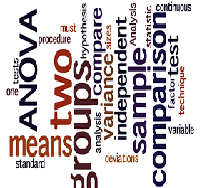
Strategic proposal
Strategic proposal
Order Instructions:
CLIENT IS FROM AUSTRALIA
Assessment Task 2: Strategic proposal
Based on your business analysis review and report, develop a strategic proposal that recommends possible changes that the organisation should consider in the future. It will include a small project plan outlining key elements to move forward. Approximately 1200 words.
SAMPLE ANSWER
Abstract
Just like the existing organizations, BlackBerry Limited also faced arbitrary changes in its reign. At one point, the company experienced a maximum level of performance, but later dropped as other advanced and more innovative technology companies emerged. There is a developing need for the business to improve its products continually and compete in the world of technological advancements. This action is doable through the implementation of projects and taking initiatives. Hence, a mini project plan is proposed by the company to attract the approval of stakeholders in accepting changes in the company’s strategy.
Keywords: BlackBerry Limited, changes, mini project plan, stakeholders
A Strategic Proposal for Blackberry Limited
- Outline Purpose
This proposal is primarily intended to voice out helpful strategies to senior management of BlackBerry Limited. This paper will further elucidate the steps and requirements for each strategy, as well as propose a mini project plan. Moreover, this article will inculcate the vision of BlackBerry Limited in the pursuit of this proposal.
- Introduction/Background
Organizational change and adaptation are needed for organizations to remain competitive (Balogun & Hope Hailey, 2008) in the business world. However, management and understanding of change are one of the most challenging aspects affecting many firms today (Tiplic, 2008). Some accept change while others resist it. Similarly, BlackBerry prospered once but later fell. The company exerted effort to surprise the public when it released its new model. Projects or initiatives are examples of organizational change (Fountain, n.d.). BlackBerry must revitalize itself by improving its project, designs, marketing, and implementation. Accepting this change is vital as it will enable the Company to thrive in the competitive world. Resistance, on the other hand, is a form of dissent (Giangreco & Peccei, 2005) and slows down or terminates change efforts (Lines, 2004). It is proposed to the senior management to allow change in BlackBerry Limited s this will enable it achieve a competitive edge in the world of technology. Grand Vision
BlackBerry envisions to bring unmatched productivity and security services to all mobile devices with BlackBerry experience (BlackBerry, 2015). Moreover, it aims at giving users an unprecedented ability to work impeccably and securely across any instrument. As what CEO John Chen said, current and former BlackBerry users demand flexibility and compromise from their devices, matching it with their lifestyle (BlackBerry, 2015). Addressing these needs mainly include a transformation of the company’s workforce and partnerships. This proposal thus purports change by considering four major strategies.
- Key Steps/Phases/Resources/Timelines
| Strategy | Steps | Phases | Resources | Timeline |
| Training | Initiating training for all employees | Updating knowledge and skills of employees through training programs; application of training knowledge through demos or mini projects | HR, training materials | 1 -2 weeks, twice-thrice a year |
| Recruitment | Recruiting efficient employees | Selecting and hiring employees with organization- and work-fit qualifications | HR, selection materials (psychological tests, etc.) | 2-3 months |
| Outsourcing | Hiring contingent workforce | Hiring temporary, freelance or contract workers whose employment is contingent upon demand for their services |
External and internal sources | 2-3 months, or twice-thrice a year |
| Strategic Partnerships | Forming cooperative agreement with other companies | Signing cooperative agreements | External sources, communication letters | Two years (depending on contract) |
| Opening Innovation | Open-up search for innovative ideas, allowing innovations to transfer easily | Introducing innovation and incorporating changes to new products in the company | Publicity materials; technical staff | monthly |
Table 1. Strategic Plan
- Managing the Change
BlackBerry will take initiate operations strategically so as not to disrupt the ongoing climate in the company. Recruitment of new employees may result in giving old employees a notion of layoffs. Thus, the company will inform staff beforehand about changes. This step will engender support and commitment needed.
- Mini Project Plan for Incorporating Changes in BlackBerry Limited
6.1 Purpose/Objective
This project plan pursues the following:
- To enhance employee competitiveness through strategies such as training, recruitment, outsourcing, strategic partnership, and open innovation.
- To improve productivity and demand for BlackBerry devices through the company’s innovative advantage.
6.2 Strategy to Manage the Change
For the change to occur, there are necessary concept shifts that are needed. People will have to think differently to pursue the goals of the project or BlackBerry in general.
6.2.1 Engagement. Accepting change in an organization is tough for employees. Managers should know the importance of readiness in embarking change (Mutihac, 2010). Mutihac also mentioned the importance of developing a proper, organized, and organization-wide system of internal communication to enable implementation and practice of change. Communication is an essential measure in engaging staff and stakeholders since it enables visibility of success.
6.2.2 Communication. The most efficient way to reach stakeholders is through personal communication (e.g. through scheduled business meetings). The proposal will be presented and openly discussed. It is also necessary to open up partnership projects to gain the interest and commitment of stakeholders.
6.2.3 Resistance. Potential barriers are deemed unavoidable, and there are still possibilities that the stakeholders will resist the project.
Cognitive Resistance and Behavioral Resistance. Mutihac (2010) believes that others perceive change as difficult because of the need to learn new tasks, programs, routines, and even unlearn what was viewed previously as normal. The company can address this form of resistance by communicating effectively to stakeholders the goals of the project, as well as by assuring them that they will do the project hand in hand.
6.3 Stakeholders
Since there will be changes in the company’s structure and processes, there will also be variations in the contracts. BlackBerry will make arrangements to align changes to existing agreements. Otherwise, stakeholders might terminate the relationship with the company. Stakeholders are necessary since their shares and connections are of great assistance to while still undergoing changes.
6.4 Estimated Resources Required
Different materials and resources will be utilized in the conduct of the project. Training materials are needed such as brochures, additional programs, and technological facilities. Psychological tests are also necessary as well as communication letters and publicity materials. These mentioned needs will be communicated to the senior management through a communication letter and a board meeting.
6.5 Specific Activities that needs to be Carried Out
The management will give incentives to down line management teams who complied to changes in the company. BlackBerry Limited may also reward employees by giving them a vacation leave or whichever is rewarding for them. After all, everyone is part of the project’s success. On the part of the stakeholders, BlackBerry Limited may reward them by proposing additional project plans or enriching alliances with other companies.
6.6 Impact, Risks, and Contingencies
Risks associated with the engagement in the project includes the possibility of employees to backfire because of resistance to change. Moreover, there is also a risk regarding the communication. Stakeholders may have strong convictions and reject the project proposal despite its feasibility and the persuasion of BlackBerry Limited.
- Sign off/Approval
This proposal entitled “Mini Project Plan for Incorporating Changes in BlackBerry Limited,” submitted by ___________________________ (name and position) of __________________ (organization/department), on the ___the day of _______ (month), is hereby accepted and granted approval to proceed.
Approved by:
____________________________________
Management Teacher
- Summary
Needless to say, despite the arbitrary challenges that BlackBerry Limited faced, it can still claim back its title as the global leader in mobile communications (BlackBerry, 2015). This plan will only be possible if the company will allow itself to accept changes and take initiatives in the world of innovative technology. Although there are risks associated with such acceptance, still, the benefits outweigh its costs. Moreover, a mini project is necessary to test such claim. Thus, the researcher suggests a proposal for incorporating changes in BlackBerry Limited. Upon approval of the plan is the authorization to proceed.
References
Balogun, J. & Hope Hailey, V. (2008). Exploring strategic change. Harlow, England: FT Prentice Hall Financial Times.
BlackBerry. (2015). BlackBerry. (2015). ‘BlackBerry outlines vision to bring unmatched productivity and security software and services to all mobile devices with blackBerry experience.’ Retrieved from http://press.blackberry.com/en/press/2015/blackberry-outlines-vision-to-bring-unmatched-productivity-and-s.html
Fountain, J. E. (n.d.). ‘Challenges to Organizational Change: Facilitating and Inhibiting Information-Based Redesign of Public Organizations.’ National Center for Digital Government Kennedy School of Government / Harvard University
Giangreco, A., & Peccei, R. (2005). ‘The nature and antecedents of middle manager resistance to change: evidence from an Italian context.’ International Journal of Human Resource Management, 16(10), 1812-29.
Lines, R. (2004). ‘Influence of participation in strategic change: resistance, organizational commitment, and change goal achievement.’ Journal of Change Management, 4(3), 193-215.
Mutihac, R. (2010). ‘Managing resistance and the use of internal communication in organizations undergoing change.’ Aarhus School of Business.
Robbins, S., & Coulter, M. (2012). Management. New Jersey: Prentice Hall.
Tiplic, D. (2008). Managing organizational change during institutional upheaval. Oslo: BI,
Norwegian School of Management, Dept. of Leadership and Organizational Management.
We can write this or a similar paper for you! Simply fill the order form!












